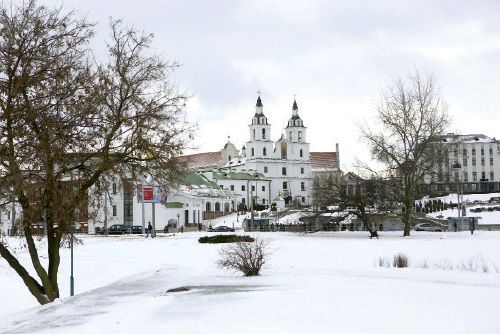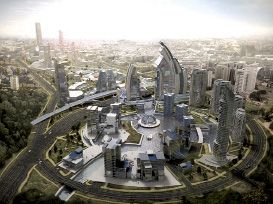
Old historical Minsk will preserve its features in future
“Minsk needs a new ‘face’,” emphasises Alexander Akentiev, Chief Architect of Minskgrad. He notes that large, multipurpose complexes are to be built around the ring road, and prestigious, luxury housing (rather than traditional high rise towers).
Land plots have been chosen in Masyukovshchina, around Partizansky Avenue and Uruchie, replacing some Ministry of Defence sites, while former post-war Minsk settlements are to be demolished and built anew: over 1 million square metres of dilapidated buildings are to be converted in this way.
 Five years ago, the population of Minsk was forecast to remain within 2 million. However, every year, the umber of Minsk residents increases by 15,000, while about 100,000 people commute into the city to work. “Minsk enjoys a high intensity of communication with its suburbs,” asserts Mr. Akentiev. By 2030, nearly 120,000 people should reside in satellite towns, helping ease congestion in the capital and encouraging wider development.
Five years ago, the population of Minsk was forecast to remain within 2 million. However, every year, the umber of Minsk residents increases by 15,000, while about 100,000 people commute into the city to work. “Minsk enjoys a high intensity of communication with its suburbs,” asserts Mr. Akentiev. By 2030, nearly 120,000 people should reside in satellite towns, helping ease congestion in the capital and encouraging wider development.
Historically, almost a tenth of the city’s territory has been occupied by manufacturing enterprises, unlike other European capitals. By 2030, industrial zone enterprises will be fewer in number, and will be obliged to meet new regulations.
However, the Frunzensky and Moskovsky suburbs currently lack enough employment, obliging residents to travel and burdening the roads, including public transport. Accordingly, 300 hectares of industrial zones are planned, to serve residential communities.
The plan envisages the city remaining comfortable and green, with parks and recreational zones constructed in the west and southwest, where they are lacking. About 100 new traffic interchanges, pedestrian zones and cycle paths are also planned for tomorrow’s Minsk.
By Aelita Syulzhina











